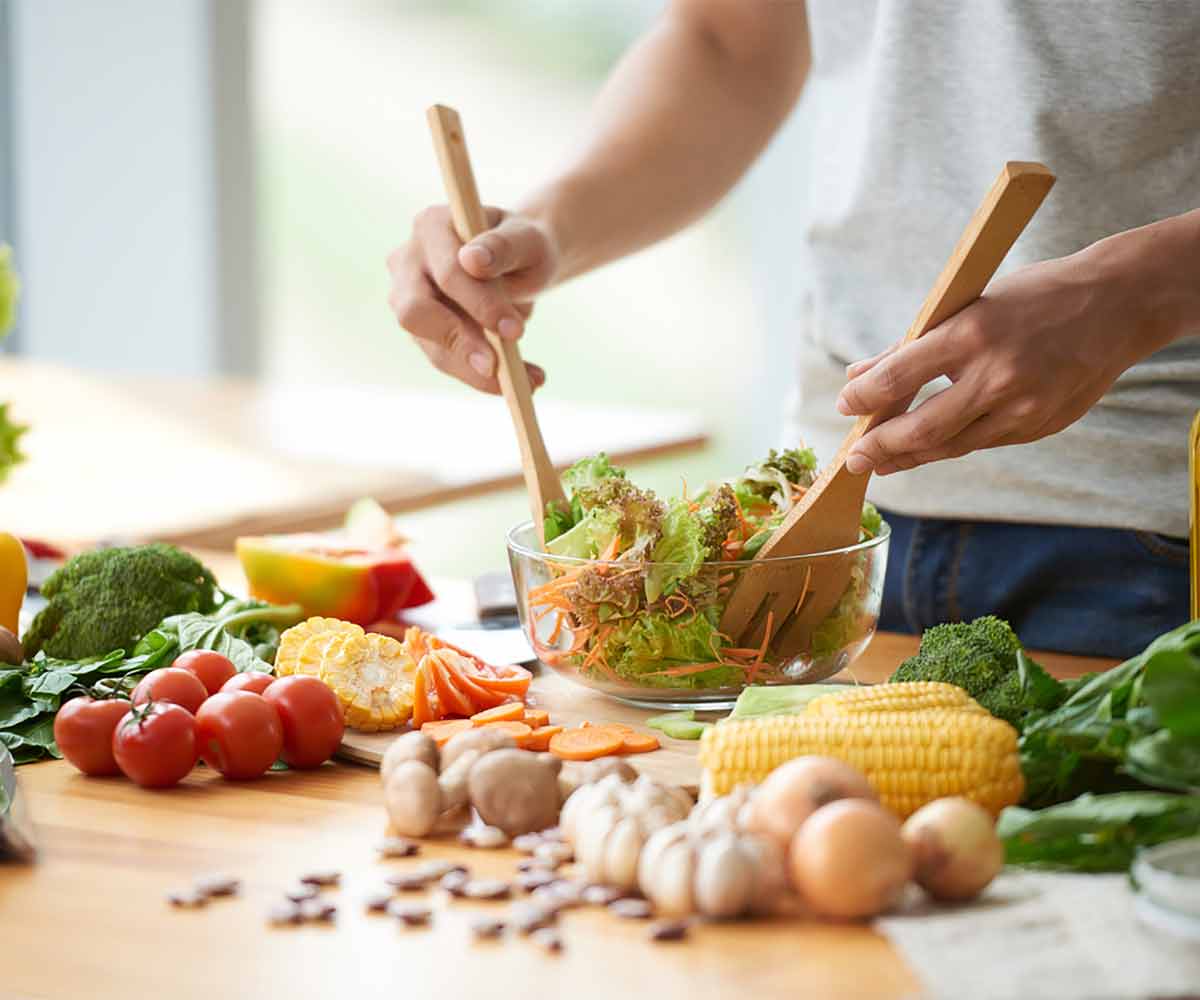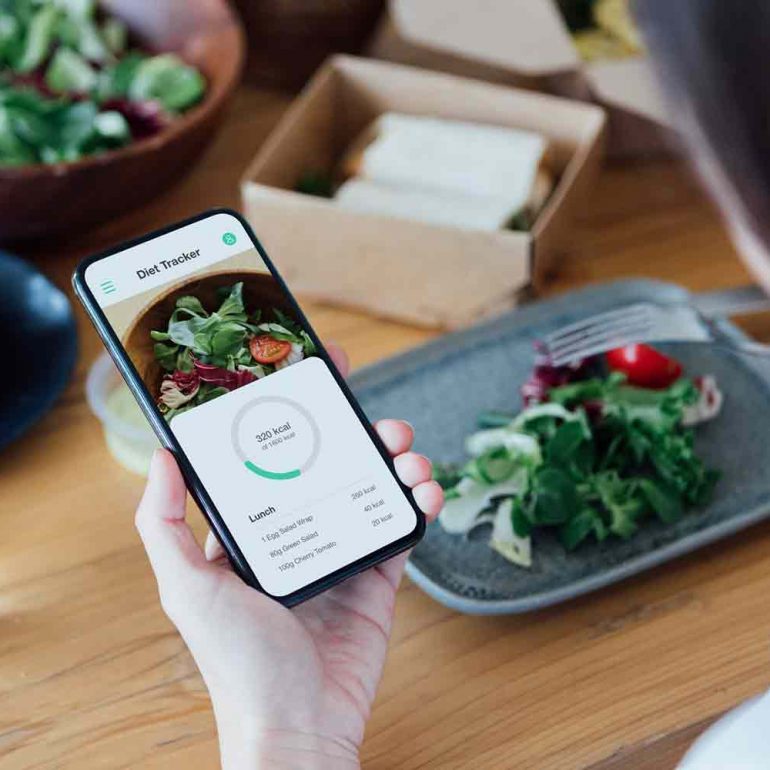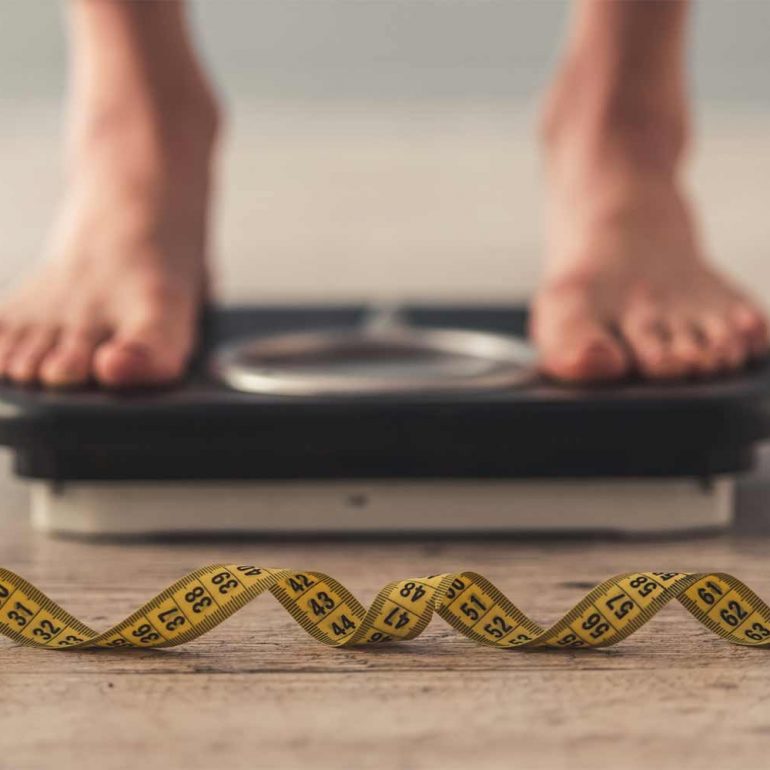The first time at a KFC in the United States, I asked for a small soda, then was handed a jumbo-sized cup for self-service.
I said to the lady, “I’m sorry, I asked for a small.” She said, “This is a small.”
Then I walked out with a huge Dr. Pepper in hand. Twenty minutes later, I threw it away because all the sugar and carbonation in it made me bloated. I knew then that weight loss in America would be a challenge.
In America, everything is bigger.
Today’s weight loss and fitness industries teach people to base portion-sizing on calorie counting, yet many who experienced it have found it ineffective and misleading.
Why?
Because calories don’t mean satisfaction. A 50-calorie apple could be more satiating than a 200-calorie brownie, and when joy is absent, deprivation is on.
This is the start of the chronic dieting mindset which is hard to escape later.
It explains why MyFitnessPal, a platform that merely simplifies calorie counting and makes people even more obsessed with the numbers, is not solving the problem in the long run.
But what is the alternative?
Eat whole foods, mindfully.
This is how I was taught to eat the right portion since my early childhood in China.
In my memory, my mother would hand me a small bowl pre-filled halfway with fluffy rice.
She would then add some sliced meat from the light, freshly cooked stir-fry dish, then use the green vegetables to cover everything.
There’s one more step she never forgot to take: mixing everything thoroughly just to make sure every spoonful had rice, meat, and greens in it.
She would then feed me each spoonful and watch me chew slowly. When I finished, she would ask me, “Are you full?” Then I would contently nod my head or ask her for more food.
“Are you full?”
Answering this simple question once and once again trained me to be mindful about my body’s connection with food at a very young age.
I quickly learned what every meal was supposed to include, and the key components always needed to be there, even though the entrees changed day after day.
A bowl of rice mixed with scallions, bean curd, and mushrooms
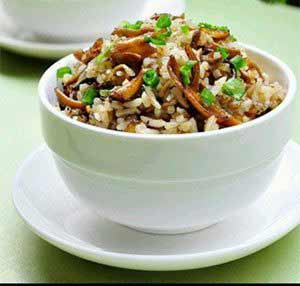
No scale is necessary, nor are the measuring cups and spoons a must. I can accurately gauge the food portion size and proportion just by looking at what’s in the bowl. It’s a skill I gained from daily practicing.
The concept of calorie-counting, which has recently arrived in China from the west, seems to address a need that doesn’t exist among most of us in China because all that is necessary is to listen to your body attentively.
That listening ability is human being’s natural instinct that seems to be largely forgotten.
Bonus Tip: Consider cutting your meat into bite-size pieces and mix the meat, vegetables, and starch well when eating. When we eat foods of different textures together, we feel more satisfied – both physically and psychologically.
What do you do then?
You visualize.
No matter what you are eating, visualization makes you conscious of the actual amount of food you are getting from each food category. You’d be surprised by how less often you overeat simply by being aware.
Here’s how you can start it:
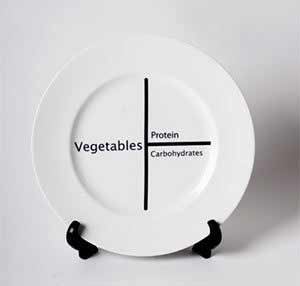
For each meal, visualize a 9-inch plate with 55% lightly cooked vegetables, 20% lean meat or tofu, and 25% grains or potato. Do not go over the quota for each food category.
Eat slowly, chew well. Feel the flavors, aroma, and the varied texture of the food you are eating, and be attentive to how it makes you feel.
If the amount of food on your plate fills you well, stop. If not, get 10% more vegetables and protein.
When setting your goal for mindful eating, don’t go for 100% full but 80%, and fill the other 20% with healthy, clear soup, tea, or water. Let the liquid hydrate you and inflate the food you eat. Within just minutes, you’ll be satiated.
Super easy, delicious enoki mushroom soup done by Elaine at China Sichuan Food. Find recipe.
Guess what, on the dinner table of a traditional Chinese family, a warm soup cannot be missed.
Sometimes, a bowl of light, flavorful, and nutrition-rich noodle soup would do the job
Vegetarian ramen by Nami @ Just One Cookbook
Bonus Tip: Simply by pouring the soup into the rice bowl and letting it stay for 10 minutes can inflate the rice size by 15%. You feel you are eating more, but you aren’t.
In the meantime, the soup, while softening the rice, enriches it with flavors and aroma, making it an even more pleasurable eating experience.
This is almost close to the concept of congee – a soup that you can eat one whole liter with less than 500 calories.
Don’t Worry About Calories
If the food is fresh, natural, and cooked with a moderate amount of fat and sugar, you’ll rarely hit the calorie ceiling before feeling full. In fact, chances are you’ll naturally create a substantial gap.
Keep asking yourself, “Am I full yet?” Then feel it, and wait for a few seconds before answering.
Gradually, you will regain the real contentment and become comfortable with following the need of your body versus the numbers.
Note that the only thing to focus on during this practice is how your stomach feels.
If the taste buds aren’t pleased, avoid compensating yourself by adding up the food quantity as many people unconsciously do.
Just stop, then go for another recipe next time.
Founder of Rice Lean, Body & Health Coach for Busy Women. In 2017, I helped 513 women across the United States and United Kingdom to lose weight based on principles of integrity, simplicity, and sustainability. It was incredibly inspiring to see how the simple wisdom from my hometown in Asia ended up completely changing people’s bodies. The truth is: when REAL weight loss happens, it happens FAST.

